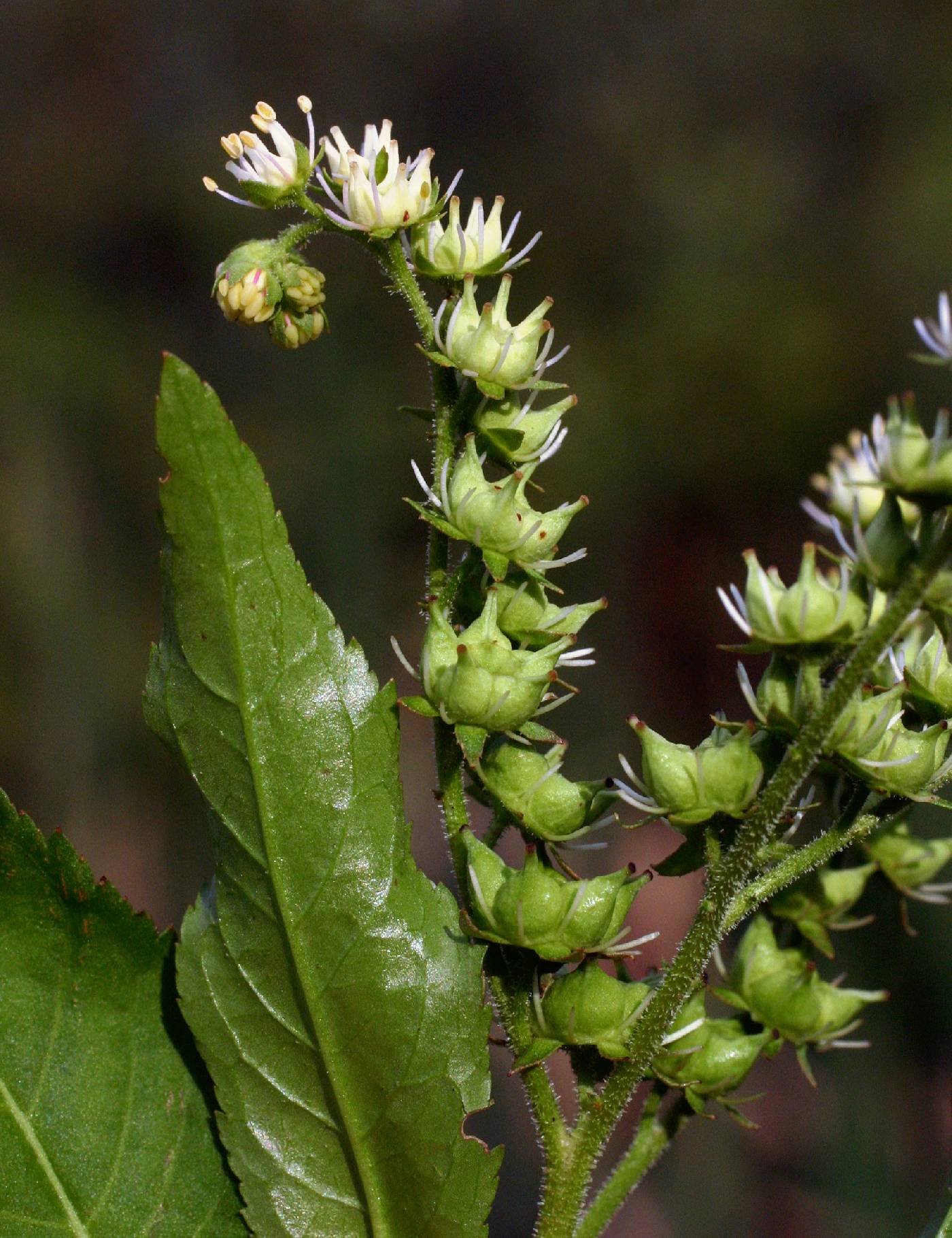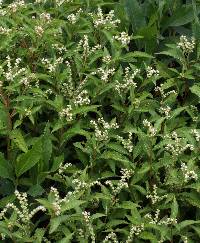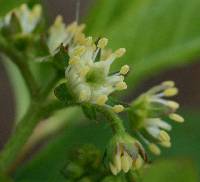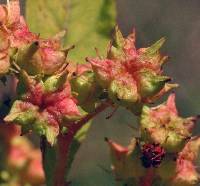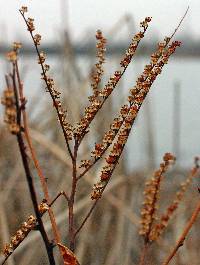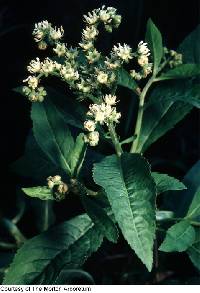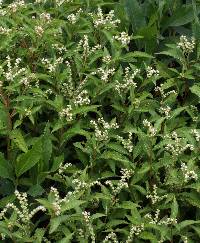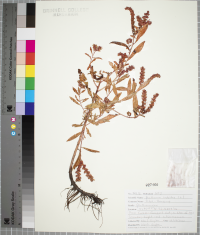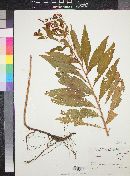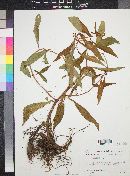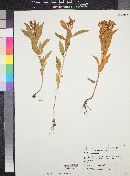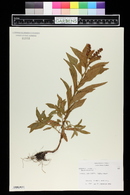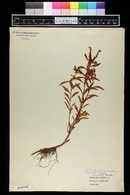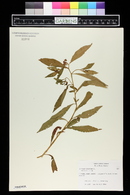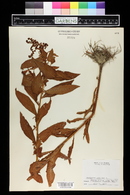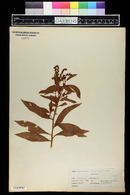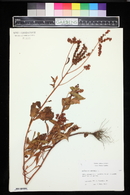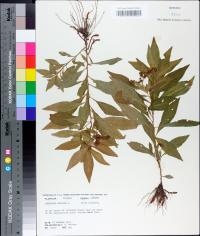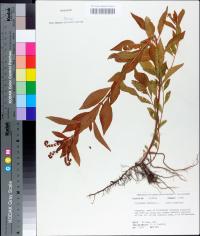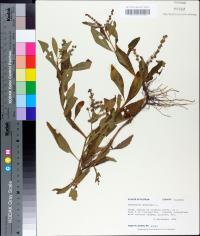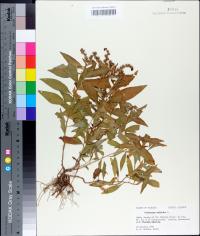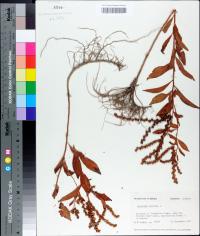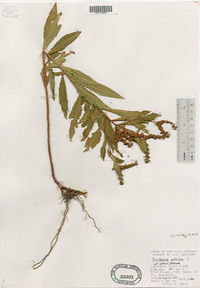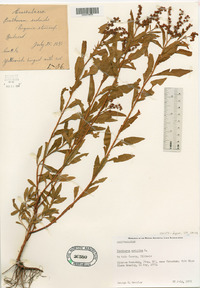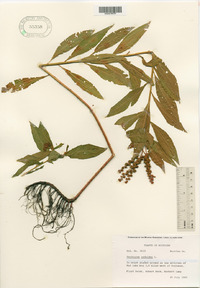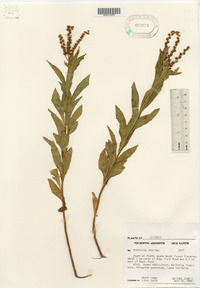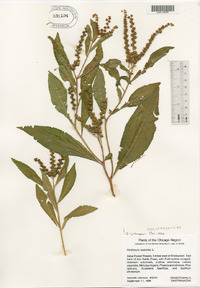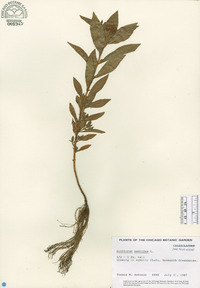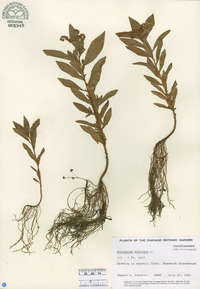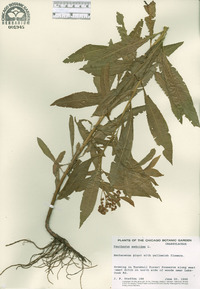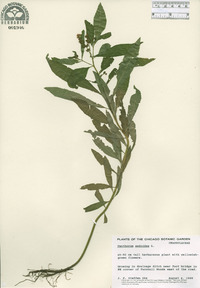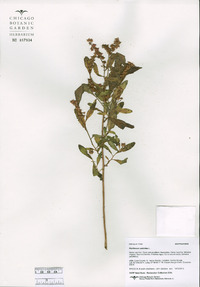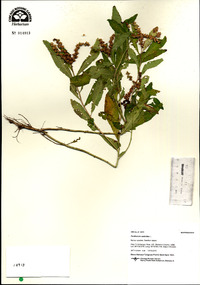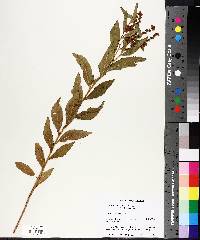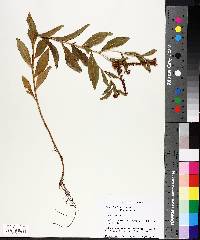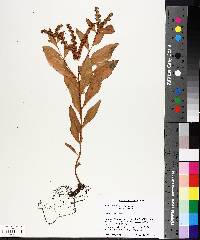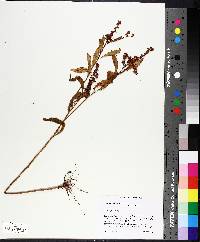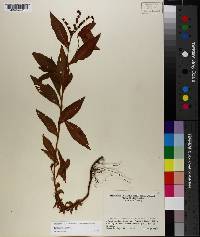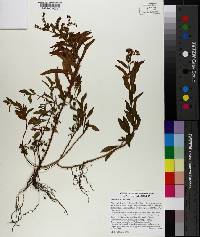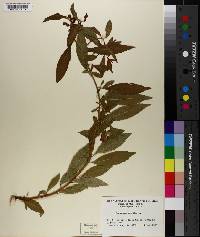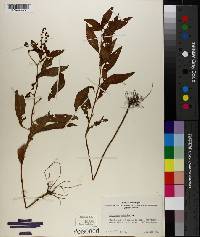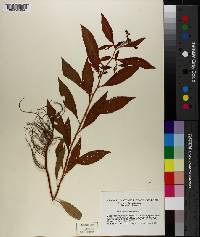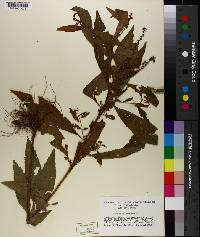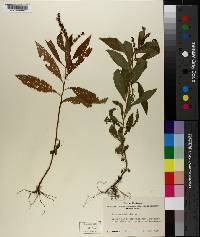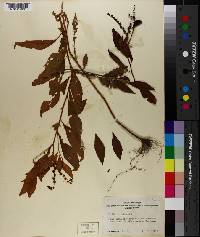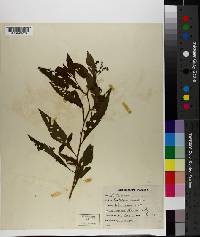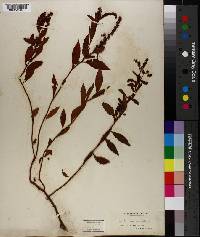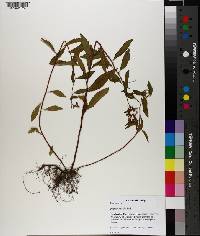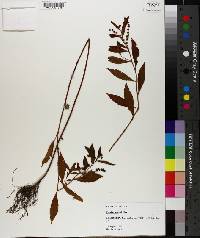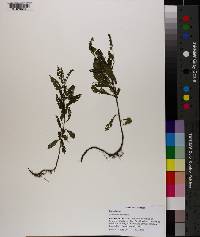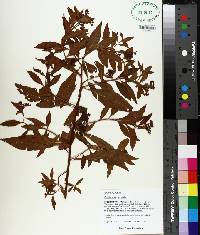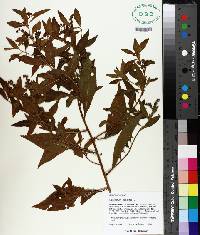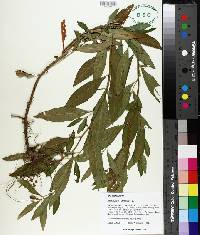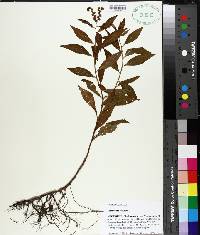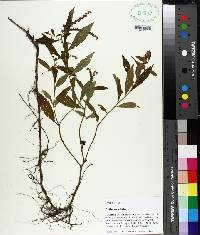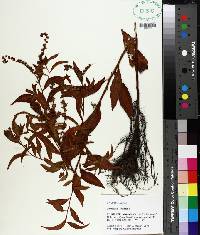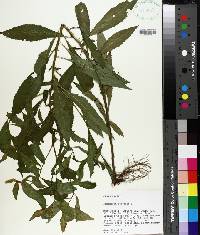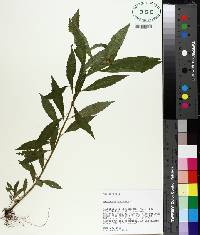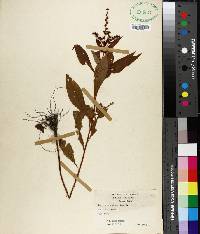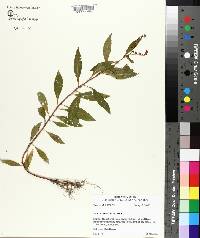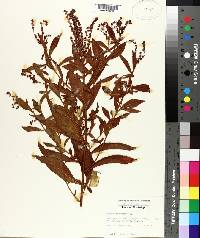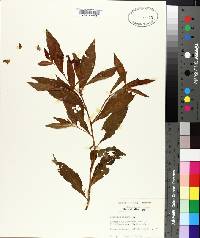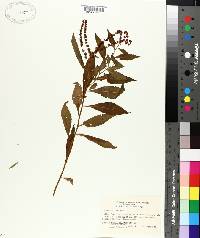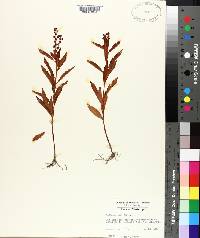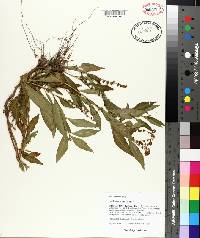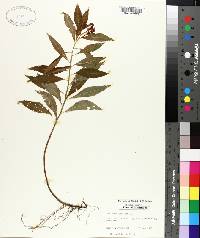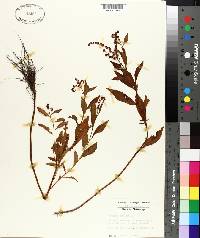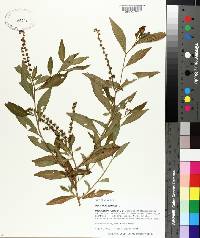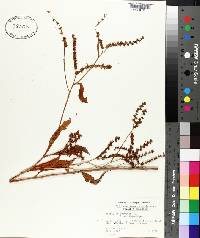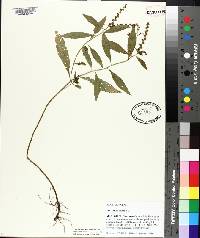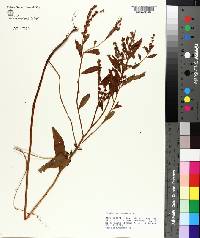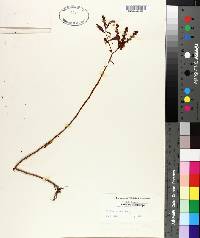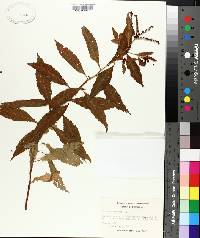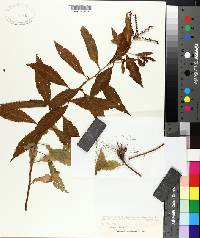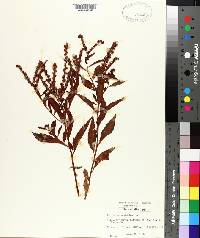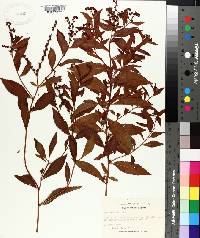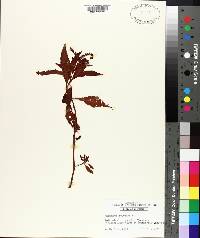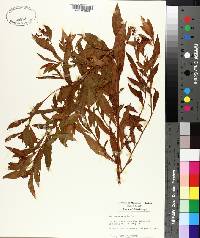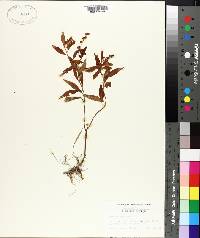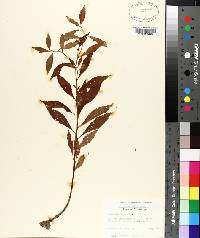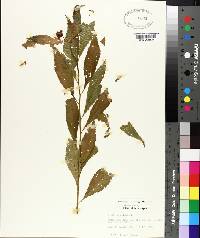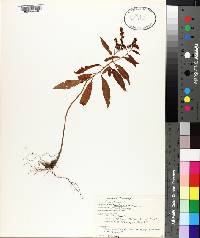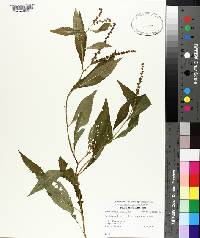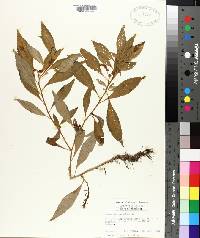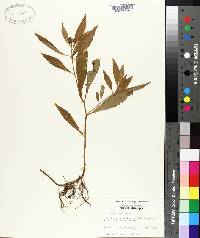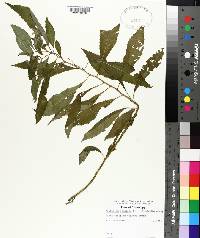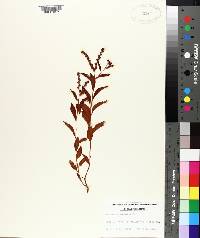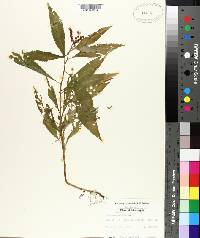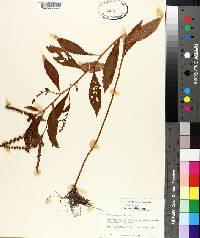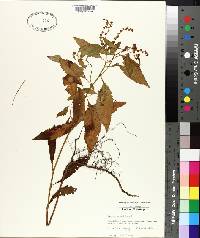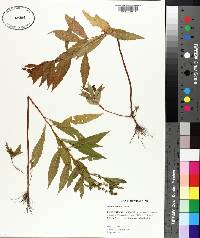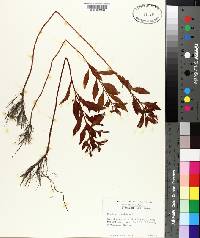Penthorum sedoides
|
|
|
|
Family: Penthoraceae
ditch stonecrop, more...Ditch-Stonecrop, Virginia penthorum
|
Stems frequently pink or reddish, especially with age, 1-6(-8) dm, stipitate glands hyaline or reddish brown and often black- or purple-tipped. Leaves: petiole absent or 1-10 mm; blade 2-18(-24) × 0.5-4(-5.5) cm, glabrous or sparsely stipitate-glandular abaxially and ad-axially, hairs black- or purple-tipped. Inflorescences secund, 2-7-branched, each branch (6-)10-25(-30)-flowered. Pedicels 0.5-3 mm. Flowers: hypanthium 0.5-1.5 × 1.5-3.5 mm; sepals persistent, erect or spreading, unequal, 0.8-2 × 0.4-1 mm, margins entire or serrulate with 1-4 gland-tipped teeth per side; filaments 1-2 mm; anthers 0.7-1 mm; pistil 3-4 mm; stigmas often purple with age. Seeds 0.5-0.7 × 0.2-0.3 mm, tubercles reddish or pinkish. 2n = 18. Flowering Jul-Oct. Wet soils, stream banks, fresh-water marshes, margins of beaver ponds, pools in floodplain forests, shores, ditches; 0-700 m; B.C., Man., N.B., Ont., Que.; Ala., Ark., Conn., Del., D.C., Fla., Ga., Ill., Ind., Iowa, Kans., Ky., La., Maine, Md., Mass., Mich., Minn., Miss., Mo., Nebr., N.H., N.J., N.Y., N.C., N.Dak., Ohio, Okla., Oreg., Pa., R.I., S.C., S.Dak., Tenn., Tex., Vt., Va., Wash., W.Va., Wis. The seeds of Penthorum sedoides were used by the Meskwaki to make cough medicine, and the leaves were used by the Cherokee as a potherb (D. E. Moerman 1998). The species is introduced in southern British Columbia, Oregon, and Washington, where it grows in cranberry bogs.
Perennial herb 15 cm - 1 m tall Stem: erect, unbranched or branching near tip, hairless near base but stalked-glandular in inflorescence. Leaves: alternate, 5 - 10 cm long, lance-shaped to narrow elliptic, tapering at both ends, finely toothed. Flowers: borne terminally on a two- to four-branched inflorescence (cyme) 2 - 8 cm across, greenish, with five oblong-lance-shaped sepals, five petals falling early or absent, ten stamens, and five pistils fused at the base. Fruit: a five-angled, five-beaked, five-chambered capsule, 5 - 6 mm wide. The capsule opens when the beaks fall off, releasing many seeds. Similar species: Penthorum sedoides is easy to distinguish from other members of the Crassulaceae family, because it lacks succulent leaves. Flowering: late June to early October Habitat and ecology: Frequent in ditches and along muddy shores. Occurence in the Chicago region: native Notes: This species does not have the succulent leaves of the Crassulaceae family, and it is sometimes placed in the Saxifragaceae family. Etymology: Penthorum means five, referring to the five-parted floral parts. Sedoides means "resembling Sedum." Author: The Morton Arboretum Erect, 2-7 dm, simple or branched above, glabrous below, stipitate- glandular in the infl; lvs lanceolate to narrowly elliptic, 5-10 cm, sharply serrate, acuminate at both ends; cymes 2-8 cm; sep oblong-lanceolate; capsule 5-6 mm wide; 2n=18. Marshes and muddy soil; Me. to Ont. and Minn., s. to Fla. and Tex. July-Sept. Gleason, Henry A. & Cronquist, Arthur J. 1991. Manual of vascular plants of northeastern United States and adjacent Canada. lxxv + 910 pp. ©The New York Botanical Garden. All rights reserved. Used by permission. From Flora of Indiana (1940) by Charles C. Deam Frequent to very frequent throughout the state in firm soil in wet places. It is found in roadside ditches, fallow fields, and low places in woodlands about ponds and sloughs. …… Indiana Coefficient of Conservatism: C = 2 Wetland Indicator Status: OBL |
|
|
|

